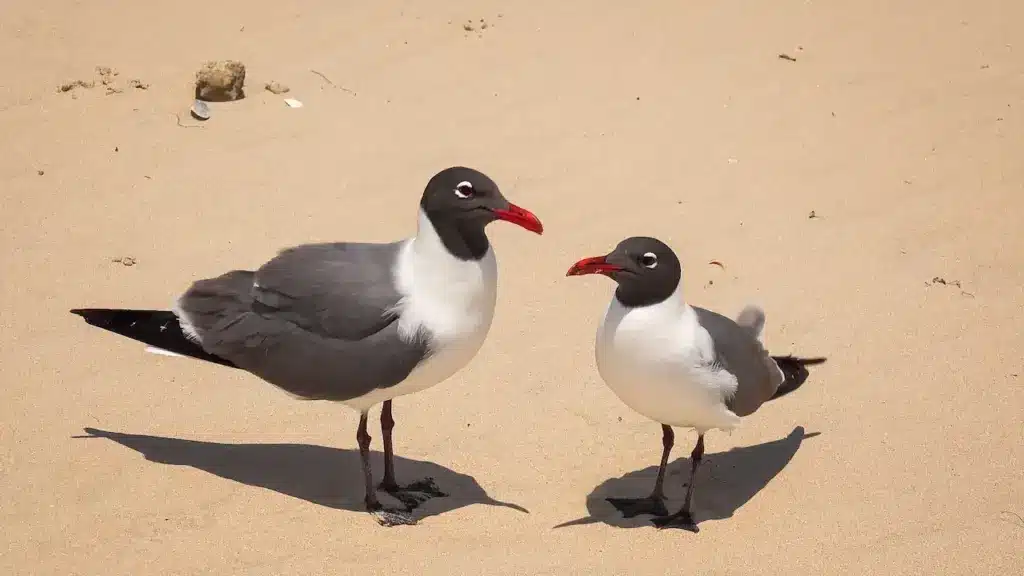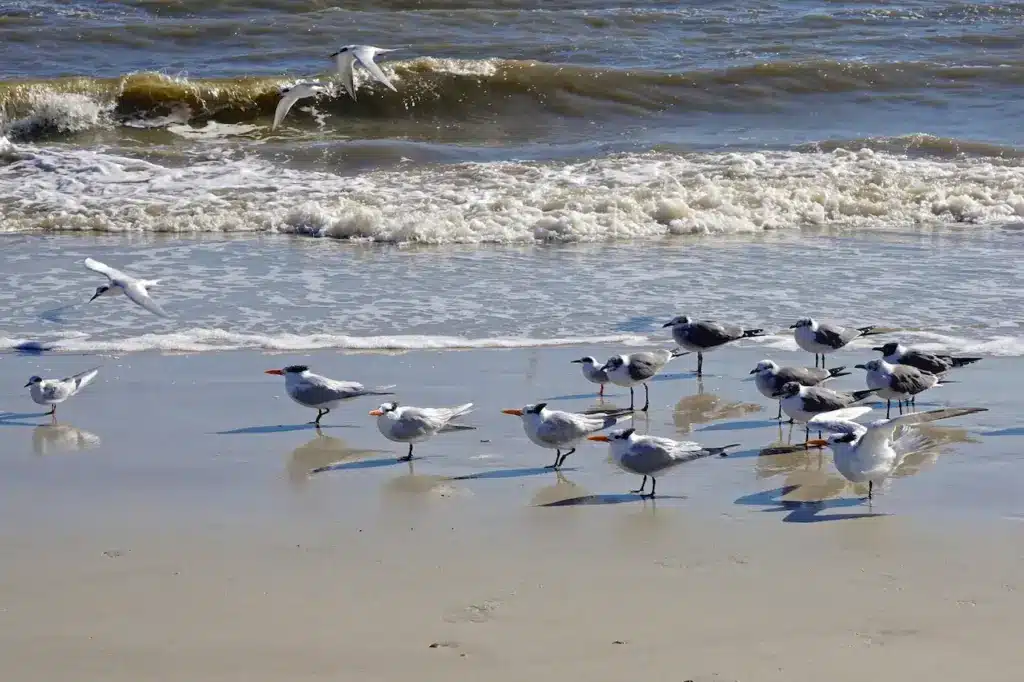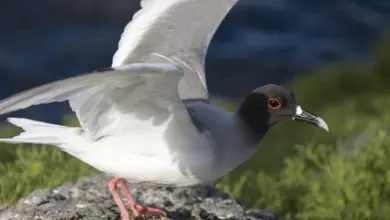The American Laughing Gulls, Larus atricilla, are medium-sized gulls of North and South America. It breeds on the Atlantic coast of North America, the Caribbean, southern California, USA, and northern South America. Northernmost populations migrate further south in winter, and this species occurs as a rare vagrant to western Europe, although there was a large influx into North-west Europe in late October 2005 when there was a minimum of 18 (and anywhere up to a possibly maximum of 35) individuals on one day in the UK alone.

The Laughing Gull’s English name is derived from its raucous kee-agh call, which sounds like a high-pitched laugh “ha… ha… ha…”
Description:
This species is easy to identify. It is 36-41 cm long with a 98-110 cm wingspan. The summer adult’s body is white apart from the dark grey back and wings and black head. Its wings are much darker grey than all other gulls of similar size except the smaller Franklin’s Gull, and they have black tips without the white crescent shown by Franklin’s. The bill is long and red. The black hood is mostly lost in winter.
Laughing Gulls take three years to reach adult plumage. Immature birds are always darker than most similar sized gulls other than Franklin’s. First year birds are greyer below and have paler heads than first year Franklin’s, and second years can be distinguished on the wing pattern and structure.
Breeding / Nesting:
Laughing Gulls breed in coastal marshes and ponds as far north in large colonies. The large nest, made largely from grasses, is constructed on the ground. The 3 or 4 greenish eggs are incubated for about three weeks.

Diet / Feeding:
These are omnivores like most Larus gulls, and they will scavenge as well as seeking suitable small prey.
Copyright: Wikipedia. This article is licensed under the GNU Free Documentation License. It uses material from Wikipedia.org … Additional information and photos added by Avianweb.
Please Note: The articles or images on this page are the sole property of the authors or photographers. Please contact them directly with respect to any copyright or licensing questions. Thank you.




